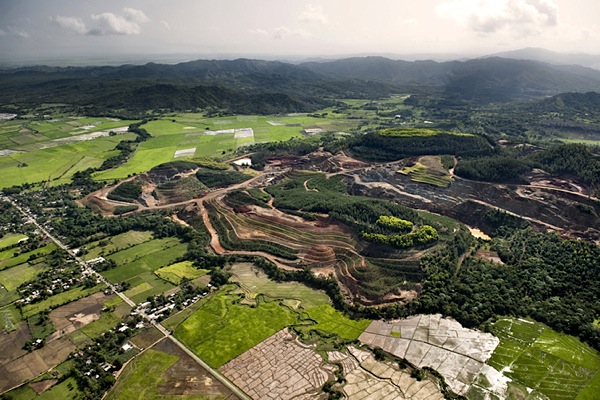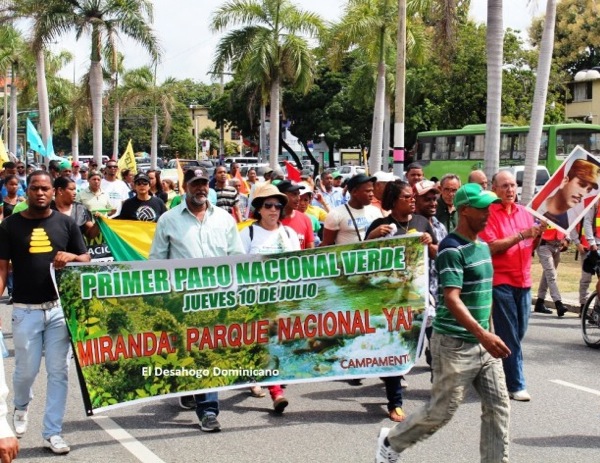
Glencore had said that its ability to expand would be a deciding factor in its decision to stay in the Dominican Republic.
Glencore’s (LON:GLEN) ferro-nickel Falcondo mine’s fate in the Dominican Republic is more uncertain than ever as the country’s legislators approved this week a ruling that declares the region surrounding the mine a national park.
The company, which halted operations at the mine in October last year due to falling nickel prices, warned Friday that Falcondo has only a few years left, and that a park creation will hinder any plans to expanding the mine, EFE news agency reports (in Spanish).
The global mining and commodities trading giant called authorities to apply “rationality” when deciding on issues affecting the mine’s future, adding that seizing the property would violate the Dominican constitution and “set a bad precedent” for the country, Noticias Sin reports (in Spanish). The ruling still needs the Presidential approval.

Dominicans marched this week to press President Danilo Medina to ratify the Senate’s decision of making Loma Miranda a national park.
The firm’s plans to grow the mine received a setback earlier last year when the United Nations Development Program (UNDP) rejected an environmental impact study as “incomplete.”
A UN panel also said the project would endanger water supplies, wildlife and wetlands.
On top of that, the mine in Loma Miranda, less than 100 km north of the capital Santo Domingo, has been the focus of relentless environmental protests for years.
Glencore has mined for nickel in the area through the now absorbed Canadian Falconbridge since 1971, and was seeking permits to expand its operations on about 3,400 acres (1,380 hectares) near the town of Bonao.
A lawyer for the mine has said in the past that the government would have to pay around $4 billion in compensation if it declares the area a national park.
Dispute
This is not the first time the Caribbean nation’s government clashes with mining companies in recent years over royalties and environmental regulations. Dominican customs agents held up shipments from Barrick Gold’s (TSX, NYSE:ABX) $4 billion Pueblo Viejo mine last year after President Danilo Medina called the company’s concession “unacceptable.”
According to data published by the Dominican Republic’s geology society (Sodogeo), the Caribbean nation is sitting on nearly $58 billion of unexplored reserves of minerals and metals.
Based on the entity’s calculations, the underground hidden treasure trove comprises about 27 million ounces of gold, 168 million ounces of silver, 652 million pounds of copper, 6 billion pounds of zinc and 25 million pounds of nickel.
Top image by CoopVega Real | Flickr Commons
3 Comments
fredquimby
Just a way to take the mine away, after foreigners come to 3rd world countries and set up good paying jobs, commerce and then get kicked in the teeth. Ask Halburton about Iraq. Greed sets in, and corrupts.
gringoviejo
Typical corrupt arrogant DR government, tried to steal Barrick’s gold at the airport ( twice), the government will take over and try to run the mine. the other old government mine Rosario is an environmental disaster. The UN and Dominicans worry about their water ways but they dump their garbage in the rivers. It is not safe to swim in their rivers I lived there 2 years
The country has lots of mineral wealth but very little mining expertise but the government is too impatient to get the revenues, to allow the new generation of Dominican engineers to learn, so they can run the industry in the future
Bonao is a dangerous city now due to the lay offs, glencore kept about 1000 people employed. I guess the government wants them to make a living driving moto conchos around at 50 pesos per passenger versus working at the mines
wally
Some might say this is social justice, a knock on affect of twits and pagecheeks. The people have spoken, whilst it can perhaps be considered cynical and arrogant, when a number of people are of one mind ( especially if the majority ), whomsoever is in control cannot ignore them. Unless prepared to accept the consequences.
Sadly, mining seems to be becoming more and more political with the ‘decision’ making process subject to the whims of politicians.